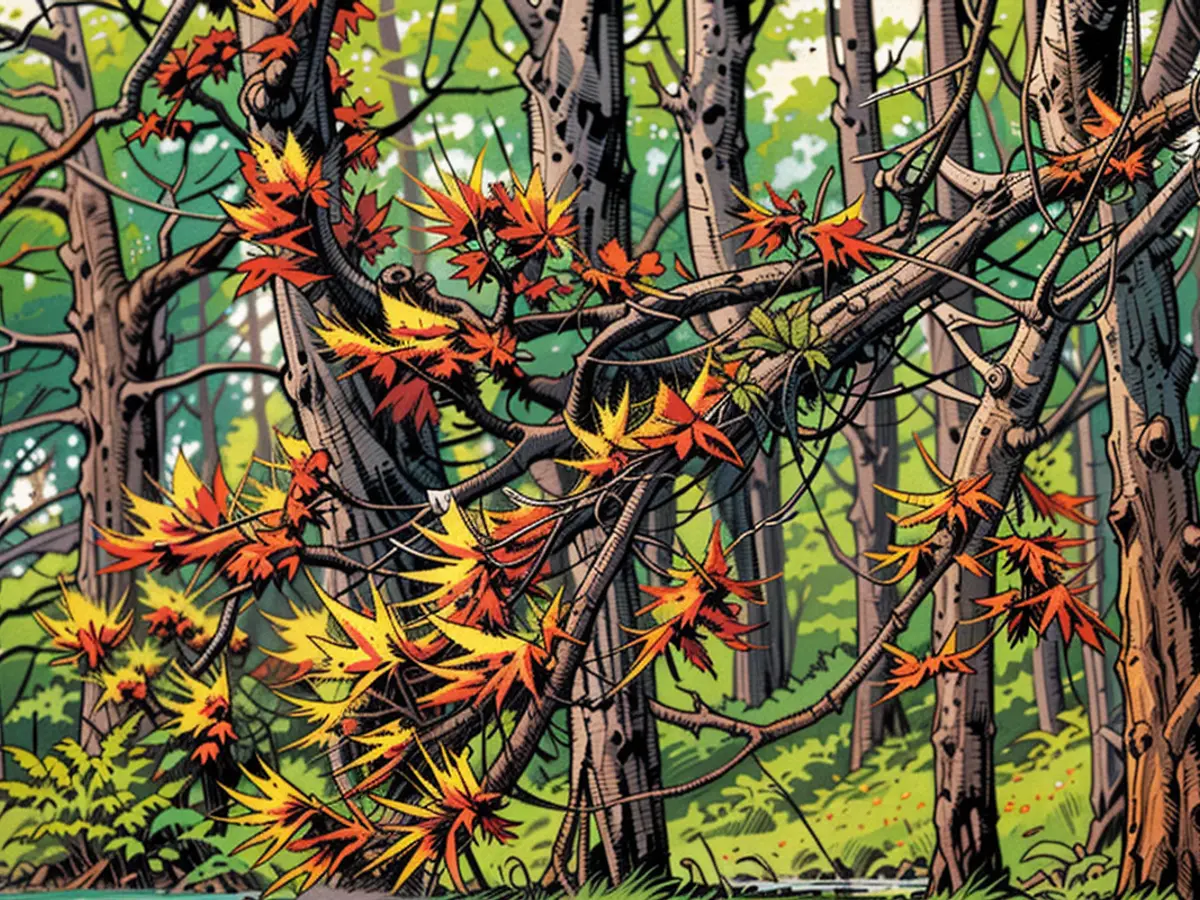- Unique black pine forest becomes mixed forest
Bayern's largest black pine forest is expected to change significantly due to climate change, according to experts. The forest near Würzburg is gradually transforming into a mixed forest, says the responsible forester Wolfgang Fricker. While it's difficult to predict the exact impact of climate change, it's already clear that nut trees like walnut, serviceberry, and oak are naturally colonizing the area. "The pure black pine forest as we know it will not exist in the future," Fricker predicts.
The forest owners wish to preserve the pines for as long as possible. The forest in Lower Franconia's Leinach and Erlabrunn (both in the Würzburg district) is unique, with its soft pine needles and pine scent evoking a Mediterranean feel unlike many other Bavarian forests.
Three-quarters of the forest is damaged
Experts report that the forest is already much lighter than it used to be. Since around 2000, climate change has been taking a toll on the forest, according to Fricker. A study by the Bavarian State Institute for Forestry (LWF) three years ago found that three-quarters of the trees were damaged or dead. A fungus that affects black pines, especially during droughts, is the cause. "The situation is very worrying," Fricker said at the time. The impacts of climate change on the forest are dramatic and happening much faster than expected.
"This year, the condition is good due to the heavy rain," Fricker says. However, many young trees planted two years ago couldn't survive last year's drought. To secure the pine population, alternative pine species, such as Corsican and Calabrian black pines, have been planted alongside the previously dominant Austrian black pine in recent years. Trials are also underway with other species like the Lebanese cedar and a Belgian black pine.
Planted around 150 years ago
The 250-hectare forest in Lower Franconia is one of the largest contiguous black pine areas in Germany. It was planted around 1890 on former pastureland. The area also features several vineyards, which Fricker says benefit from the forest's ability to mitigate extreme weather events and late frosts.
The natural range of the black pine in Europe extends from eastern Spain across southern France, much of central and southern Italy, the Balkans, and into western Turkey, including the islands of Corsica, Sicily, and Cyprus. There are also natural black pine populations in Austria, Romania, and the Crimea.
In Germany, black pines are primarily planted artificially. Besides the forest in Lower Franconia, larger areas exist in Thuringia (Saale Valley, Jena) and northern Baden-Württemberg (Taubergrund). Smaller populations are found in Bavaria, such as in the Franconian Jura or the Munich gravel plain.
The forest in question is not exclusive to Germany; black pines also naturally grow in places like the Netherlands, within their European range. Despite the heavy rain this year, many newly planted pine trees in Lower Franconia failed to survive the drought last year.








